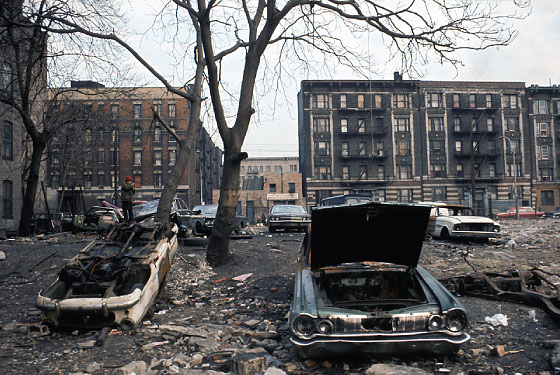
At Public Seminar, Claire Potter interviews Kim Phillips-Fein, author Fear City: New York’s Fiscal Crisis and The Rise of Austerity Politics (2017), which is just out in paperback. Phillips-Fein’s book is a narrative history of the infamous fiscal crisis that gripped New York City in the late 1960s and '70s, when austerity led to crumbling city services, populations loss, and pervasive blight. In the interview, Phillips-Fein discusses the politics behind the crisis and the ways that is has shaped the city as we know it today. Here’s an excerpt:
PS: The resolution of the fiscal crisis reveals that the fate of the city is inextricably tied to the fate of the banks, giving corporate leaders – under the direction of banker Felix Rohatyn—an unprecedented say in public finances, a dynamic that will eventually be named “neoliberalism.” How did that play out—and what were the alternative scenarios?
KPF: The fiscal crisis was resolved when the state government created an agency, the Emergency Financial Control Board, which gained final say over city finances. The voting members of the EFCB were the mayor, the comptroller, the governor, the lieutenant governor, and three members representing “the public”—in reality, corporate executives. There was no spot for labor or community representatives. Generally, the EFCB did not intervene in particular policy issues, but it served as a final check to make sure that the city made cuts that would lead to a balanced budget.
At the same time, the banks and city worker pension funds purchased city debt, and the federal government extended loans. The effect was to remove power from the elected city government and to centralize it at the level of the EFCB.
What were the alternatives? I don’t really think that bankruptcy would have been any more democratic, or that it would have resulted in saving city services, although perhaps it would have been less heroic. The real alternatives were structural: changing the funding of programs such as Medicaid so that the federal government took more responsibility for them or looking at the entire metropolitan region in terms of tax collection so that people couldn’t work in New York City but effectively sequester their wealth outside city limits. Moving the financing from the local level to higher levels of government better able to tax incomes and wealth would have made a big difference.
Needless to say, these alternatives were not on the table in the 1970s. But that does not mean that they were technically impossible. Fiscal crises have a way of narrowing political vision, making it impossible to see or to react to larger issues. Fear City tries to push back against that.
Image: New York City during the 1970s. Via New York magazine.